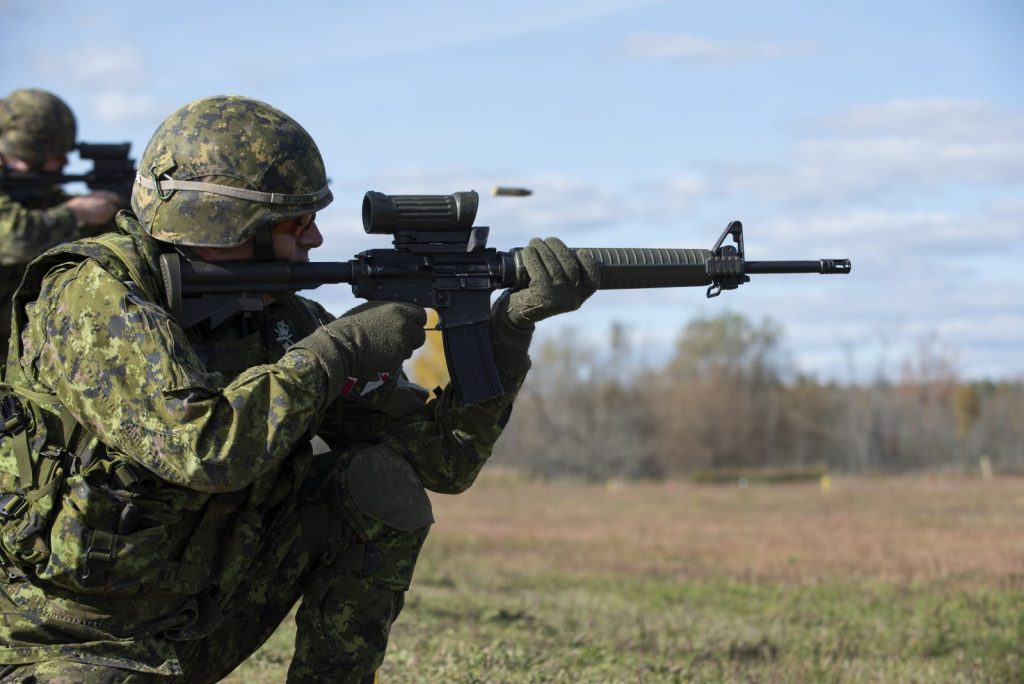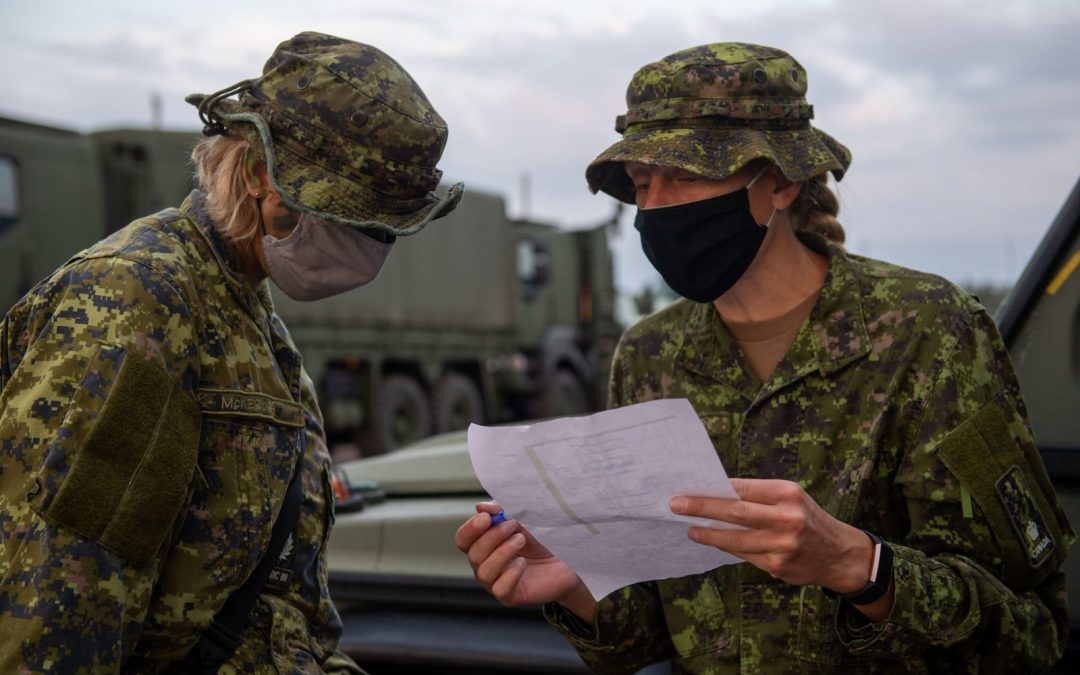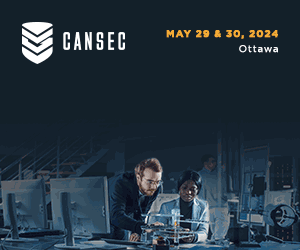As the training system ramps back up after a four month pause, restoring readiness and building resiliency are at the forefront for the commander of CADTC.
by Chris Thatcher
If 14 months in the Middle East reinforced anything for Major-General Michel-Henri St-Louis, it’s the need for resiliency. As the commander of Joint Task Force-Impact, headquartered in Kuwait and responsible for the personnel on Operation Impact in Iraq, Jordan and Lebanon, he led a capacity building mission buffeted by civil unrest in Iraq, fire exchanges between the United States and Iran, including an Iranian ballistic missile attack, and a global pandemic.
The mission was a constant reminder of the best the Canadian Armed Forces can bring. But it was also battered by what he called the perpetual presence of black swans, events that stressed the joint force and challenged Army readiness.
In such a constant state of uncertainty, St-Louis found his mind drifting back to an experience 30 years ago as an officer cadet on the basic paratroop course when an instructor moved the goal posts at the end of an intense run, leaving the cadets with an unknown distance still to complete.
“There was no question you were not going to fall out. You had to succeed, you were going to finish, but now you had this broadened element of uncertainty,” he recalled. “I kept thinking back to that run at times when we were rocketed in Iraq or had to adjust the joint force to a changing threat.”
St-Louis is the incoming commander of the Canadian Army Doctrine and Training Centre (CADTC), a position he assumed in a socially distant ceremony in August. Though he’s still settling in, recent operational experience has reinvigorated his thinking around the need to ensure training prepares soldiers for the unexpected and the ability to withstand uncertainty.
How to achieve that is a conversation he’s just begun with his command team, but the aim is to develop individuals and units that are “physically able to excel at their tasks [and] dominate on the battlespace,” but also have the mental and psychological capability to “accept a changing environment, an enemy throwing a different threat at you that maybe you had not foreseen, or an unexpected turn of events. That mental or psychological resiliency, that team cohesion, based on a solid footing of physical fitness, knowledge and technical ability – that is what I’m getting after.
“Sometimes we focus on our technical ability or our physical fitness to the detriment of our mental capacity to withstand change and uncertainty,” he explained. “I am looking at making it a whole, where you are able to withstand that adversity and continue to thrive.”
Much of what he needs already resides in the training system. The Canadian Armed Forces contingency plan for a pandemic, Operation Laser, imagined many things, but it did not include the deployment of soldiers into hospitals and long-term care facilities. Still, the skills to tackle the unusual request from the governments of Quebec and Ontario were resident in the training of many Regular and Reserve soldiers.
St-Louis pointed to the approach of a battalion commander with 5 Canadian Mechanized Brigade Group as he divvied up responsibilities among his platoons in Quebec. “The way he went about his business was exactly the way he had been trained to do all his professional life. The fact that their responsibility was to help in a long-term care facility compared to a village in Panjwai where there was active enemy only changed the environment.”
In fact, the capacity building that comprises most Canadian Armed Forces missions provides a solid foundation for domestic operations and the uncertainty that can emerge when working with local populations in unusual circumstances. It’s territory St-Louis knows well. An infantry officer with the Royal 22e Régiment, he has deployed on six missions to the Balkans, Afghanistan and the Middle East that involved some aspect of capacity building.
The current system produces well-trained and adaptable young leaders, he insisted. “I have seen them in combat, on training missions. The way we produce master corporals, sergeants, lieutenants and captains already gives us a number of skillsets that make us great instructors, good combat arms soldiers. But I do believe there is a special approach and a special skillset when you are doing capacity building, when you are doing transfer of knowledge to another army, and you are going there with a clear strategic intent to make them better.
“When you actually look at the output of what we are able to do with, for example, a team of Reservists from central Canada that come to Lebanon to give combat first aid training to a generation of Lebanese soldiers and officers without specific coaching experience, but with their training and professional development, it’s an amazing effect. Our Canadian perspective, our duality of language, who we are as Canadians, puts us in a great position to do that well in comparison to some other countries.”

Members of 1 Service Battalion conducted Exercise Rough Rider in September 2020 in Wainwright, Alta. Photo: Cpl Djalma Vuong-De Ramos
LOST READINESS
St-Louis is taking command of the Army’s training system as it repairs a break in its production pipeline caused by COVID-19. If the Army is normally in a constant state of generating readiness, conducting individual training, collective exercises and professional development courses to prepare soldiers for deployment, much of that took a hit between mid-March and the end of June.
“Certain activities continued during that time,” St-Louis noted, including training for rotations of troops to Iraq, Latvia and Ukraine, “but now we have to fill the gap that was caused by that pause.”
“What we lost was … readiness,” Army Commander Lieutenant-General Wayne Eyre explained in a recent interview. “We ceased all of our collective training, and based on shutting that … and reduced capacity over the summer, we lost somewhere in the neighborhood of 4,000 qualifications, about 1,000 of which were leadership qualifications. That is going to take a while to catch up.”
Eyre has prioritized individual over collective training for the next months, “understanding we still have to do some collective training to maintain that level of proficiency for readiness, for deploying troops overseas.”
That has meant a phased approach that is both asymmetric and asynchronous. Training centres have attempted to resume entry-level training and basic qualification courses, leadership training, and primary combat functions while adapting to provincial health guidelines that vary from province to province, and even within regions of a province.
At 5th Canadian Division Support Base Gagetown, N.B., soldiers have been able to quarantine in base accommodations for 14 days before starting courses at the Combat Training Centre. Other centres from the Royal Canadian Electrical and Mechanical Engineers School in Borden, Ont., to Canadian Forces School of Communications and Electronics in Kingston, Ont., and Army’s Advanced Warfare Centre in Trenton, Ont., have adopted mitigation measures, including training bubbles to limit spread between cohorts and widespread use of protective equipment, physical distancing and proper hygiene.
In August, courses resumed at the Canadian Army Command and Staff College, starting with the Reserve Army Operations Course (AOC) preparing captains for headquarters staff roles. It, too, adopted a “very controlled training bubble, supported by a synthetic simulation environment,” St-Louis said. “That was a great success. It did not result in any additional COVID cases or problems.”
More recently, the Regular Force AOC, which had paused in March, brought captains back to Kingston to finish their course. “After it’s conducted, we will harvest lessons and adjust the delivery if necessary,” St- Louis said of future programming.
By early August, Reserve units were conducting basic military qualification in a distributed manner. Surprisingly, two Divisions, “despite starting two months later, produced more individual [Reserve] qualifications then they did the previous year,” said Eyre. “Part of this is the economy and troops are more available. We had them on Class C contracts so they were a captive audience. [But] we are currently analyzing … that to see what worked and why.”

MGen Michel-Henri St-Louis, commander of CADTC, on the rifle range during C-7 weapons qualification in Kingston, Ont., in October. Photo: MCpl Rod Doucet
COLLECTIVE SIMULATION
The return to collective exercises, however, will be more nuanced. The Combat Team Commander course in Gagetown, for example, has in recent years culminated in Exercise Common Ground, a large-scale manoeuvre of armour, artillery, infantry, and service support. The exercise has also included students from the Company Sergeant Major Course, Squadron Sergeant Major Course, Advanced Sniper Course, Infantry Officer Course and Advanced Reconnaissance Patrolman Course, among others.
“This year those training repetitions will be done on the backbone of our simulation architecture,” said St-Louis. “This is a crucial course for majors that need to be ready to command subunits, teams of 100 to 150 soldiers in the battlespace. [Now] they will be dispersed, connected and leveraging technology to get the qualification.”
Some exercises like Unified Resolve already make good use of simulation and dispersed participation, but that approach will now apply to many others, including Maple Resolve, the Army’s largest and most complex live exercise and a critical marker on the road to high readiness.
“We are planning to conduct a Maple Resolve, physically, in an adapted and adjusted way,” he said. While one or more battle groups will manoeuvre across the training area in Wainwright, Alta., other units will likely connect and exercise virtually.
“By canceling Maple Resolve last year, we have lost some proficiency at the brigade level. This is a risk we are assuming eyes wide open,” added Eyre. “We are going to be making up that shortfall over the course of the next few years. One of the things I am very keen on is additional simulation – increasing the use of simulation, and the mixture of live and simulated environments.”
Both Eyre and St-Louis acknowledged the limitations of a simulated environment to generate the friction found in live exercises where soldiers battle through annoying and complex problems and build resiliency in the process. “While I’m a fan of simulation, it by no means replaces field work,” said Eyre. “What it does do is give you more sets and reps, so that when you go to the field, it is a higher quality experience.”
More than anything, COVID-19 might force wider acceptance of blended live, virtual and constructive training, fast-tracking the development of the networks connecting Regular and Reserve units and training centres and the adoption of CADTC’s recently launched Future Integrated Training Environment concept.
“There can be no more resistance to change or technology. We need to embrace it,” said St-Louis, who is still getting up to speed on a planned Virtual Training and Experimental Network (VTEN) that will eventually connect training infrastructure. “[The pandemic] might be an impetus to rely more on technology, connectivity and simulation … to still achieve [training] objectives. One of the things I am looking at from this chair: Do we have the ability to connect in all these training events?
“I think we will become even more comfortable doing things simulated and dispersed … [but] at present none of that is seamless across every level.”
The interoperability of networks will be a key talking point as the Army looks at Regular and Reserve Force participation in exercises with allies, especially the U.S. Army and National Guard. The training plan for the next 12 months still includes exercises like the Joint Warfighting Assessment series, but St-Louis is preparing “two courses of action” just in case: one if units are able to travel and one if they must connect remotely.
Whether training is conducted in Canada or elsewhere, the Army will be leaning more heavily on the Canadian Army Simulation Centre for the design, development and delivery of computer-generated and -supported events. “They have become that much more important and critical to our generation of readiness,” he said.
READY ARMY
Before assuming command of JTF-Impact in 2019, St-Louis served for two years as the deputy commanding general for operations of U.S. Army I Corps at Joint Base Lewis-McChord, WA. Comparing American and Canadian training systems and doctrine can quickly get lost in the difference in scale of the two armies. And St-Louis sees little difference between Canadian “world-class young leaders” and the “U.S. Army troops I had the fortune to serve with.”
But he is bringing to CADTC one lesson he absorbed early on at I Corps: “An absolute obsession on readiness.
“There is a very clear realization in the U.S. Army that they need to be ready to face whatever threat is coming,” he explained. “There is a laser focus on having an army that is ready, from the individual soldier to the formed units, to respond to the call. I’m bringing that as an element that animates this command I’ve inherited. It’s an amazing opportunity to be part of the doctrine and training system where we generate some of that readiness.”




Good read. Well written Chris Thatcher. Good pics too. St-Louis seems like a very intelligent man, a unique combination of benevolent and professional soldier. I think that any candidates who train under him should consider him or herself fortunate. Good luck to you all.